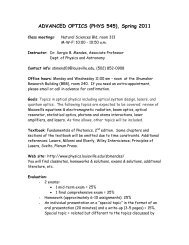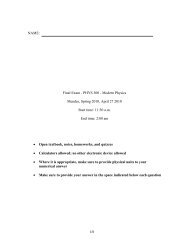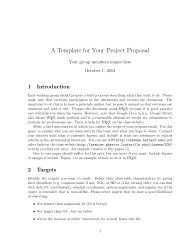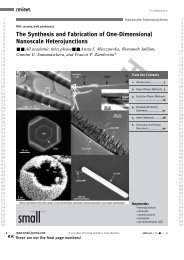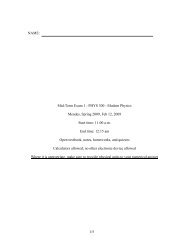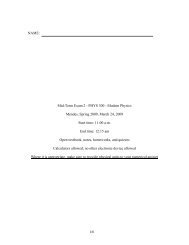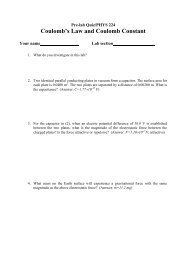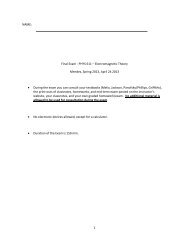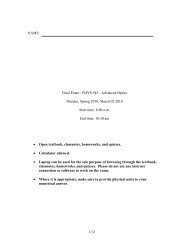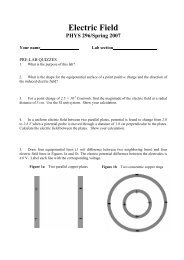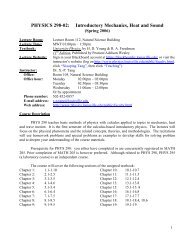Electric Field and Electric Potential (B)
Electric Field and Electric Potential (B)
Electric Field and Electric Potential (B)
You also want an ePaper? Increase the reach of your titles
YUMPU automatically turns print PDFs into web optimized ePapers that Google loves.
4. Map five more equipotentialsRepeat step 3 to map four more equipotentials by moving the tip of probe P3 respectively topoints (r=1.7 in, =0), (r=1.9 in, =0), (r=2.1 in, =0), (r=2.3 in, =0), <strong>and</strong> (r=2.5 in, =0).Questions1. For the measurement by step 2, should the measured V linearly proportional to r?2. Use arrow to mark the directions of the electric field at (r=2.0, =45°) <strong>and</strong> (r=2, =225°) inFigure 2.3. When using Equation (4) to describe the measured potential-versus-r, what are the valuesof r a , r b , V a , V b , <strong>and</strong> C?AnalysisCalculate the averaged r coordinate for the four points on each equipotential. Using theaveraged r coordinates <strong>and</strong> Equation (4) to calculate the corresponding potential. Record them inTable 1 <strong>and</strong> compare with the measured corresponding potentials.Using the averaged x coordinates <strong>and</strong> the measured corresponding potentials, calculate theaverage electric field values E V/ rbetween every two neighboring equipotentials. (Note: 1inch= 0.0254 m.)Between the 1 st <strong>and</strong> 2 nd : E Between the 2 nd <strong>and</strong> 3 rd : E Between the 3 rd <strong>and</strong> 4 th : E Between the 4 th <strong>and</strong> 5 th : E Between the 5 th <strong>and</strong> 6 th : E In Figure 2, draw four electric field lines.



